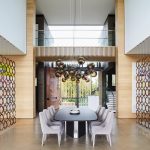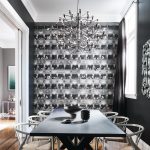Introduction
A false ceiling, also known as a drop ceiling or suspended ceiling, is a secondary ceiling installed underneath the main ceiling of a room. It’s mainly added for aesthetic reasons, but it can also enhance the functionality of a space by hiding wires, ducts, and pipes.
With the addition of a ceiling fan, a false ceiling can provide both comfort and style to your hall. In this article, we’ll explore different ways to design a false ceiling with a fan for your hall.
1. Determine the Purpose of Your Ceiling Design
Before starting any home renovation project, it’s important to identify the purpose of the renovation. In this case, what do you want to achieve by installing a false ceiling with a fan in your hall?
Do you want to improve the lighting in your hall? Do you want to add an element of design to your hall? Or do you want to improve the ventilation in your hall?
Once you figure out your purpose, you can move on to the next step.
2. Choose Your Design Strategy
There are different strategies you can use when designing a false ceiling with a fan for your hall. Here are a few examples:
Minimalistic Design
If you want a simple yet elegant look for your hall, consider opting for a minimalistic false ceiling design. This design is primarily focused on functionality, with a clean and subtle touch of design.
A minimalistic design usually consists of a plain white plasterboard ceiling with a simple ceiling fan installed in the center. The fan can be operated with a remote control, making it easy to adjust the speed and direction of the blades.
Patterned Design
A patterned false ceiling design is a great way to add a decorative element to your hall. This design involves creating a pattern on the ceiling using plasterboard, often incorporating lighting fixtures and a ceiling fan.
There are several patterned designs you can choose from, such as a geometric pattern, a floral pattern, or even a starry night sky pattern.
Artistic Design
For those who want to make a statement with their hall’s false ceiling design, consider opting for an artistic design. This design involves installing a unique and eye-catching piece of art on the ceiling, accompanied by a ceiling fan.
Examples of artistic designs include a sculptured ceiling with painted clouds or a mosaic tile ceiling with a vintage-style ceiling fan.
3. Consider the Material You Want to Use
False ceilings can be made from different materials, including:
- Plasterboard
- Metal
- Wood
- Fabric
Each material has its own pros and cons, so consider which material suits your purpose and design strategy the best.
4. Lighting Options
Lighting is an important aspect to consider when designing your false ceiling. Here are a few lighting options to consider:
- Recessed Lighting – This involves installing lights into the ceiling, which gives the room a clean and modern look.
- Spotlights – These are small lighting fixtures that can be directed at different angles to highlight specific areas of the room.
- Pendant Lighting – These are lights that hang from the ceiling and can add a decorative touch to the design.



